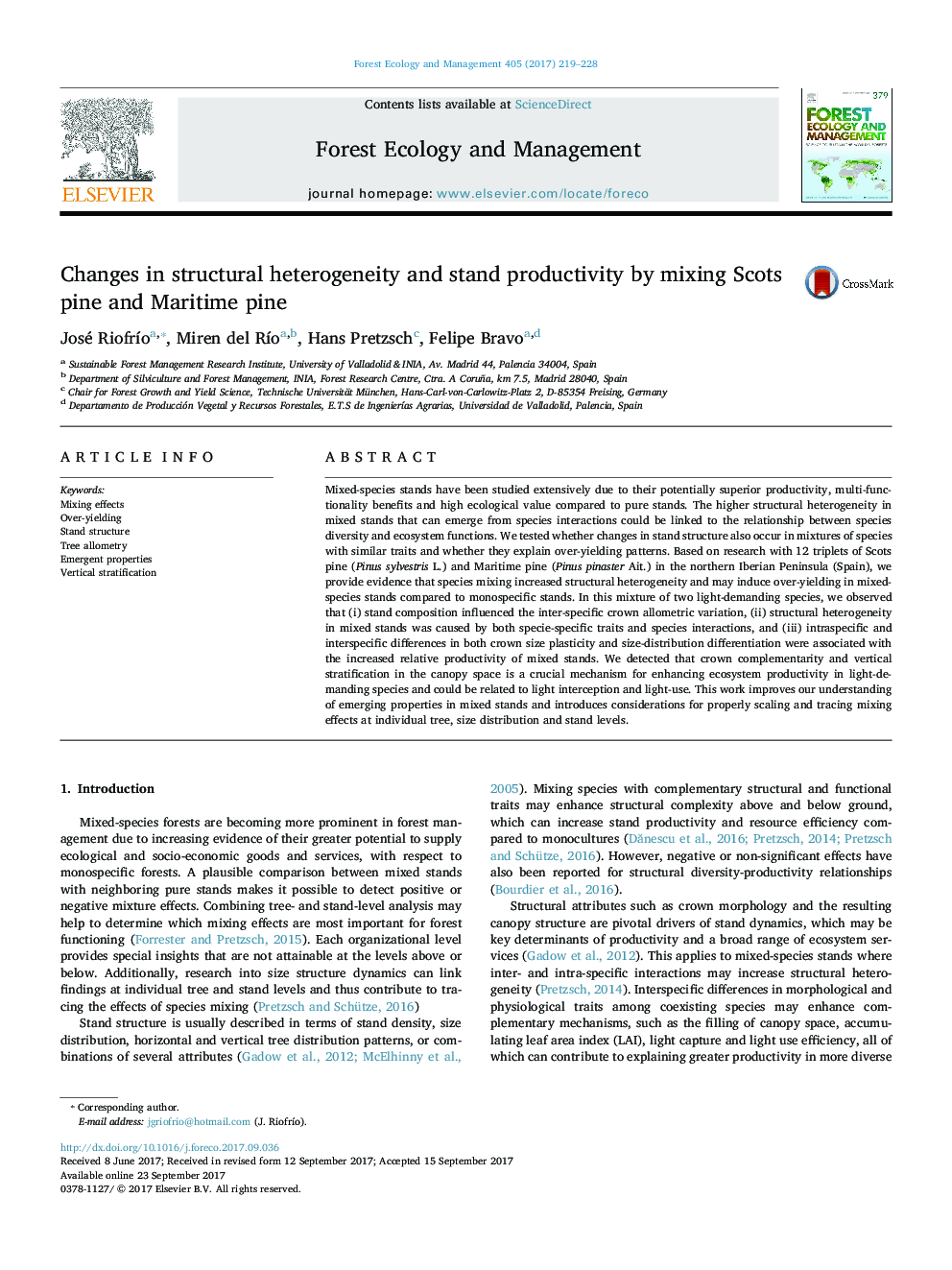| Article ID | Journal | Published Year | Pages | File Type |
|---|---|---|---|---|
| 6459075 | Forest Ecology and Management | 2017 | 10 Pages |
â¢Tree crown morphology was significantly influenced by interspecific competition.â¢Species mixing induced changes in stand structure compared to monocultures.â¢Structural heterogeneity in mixed stands results from emerging mixing effects.â¢Relative productivity increased as the difference in expected heights increased.â¢Crown plasticity and size-distribution are possible mechanism enhancing productivity.
Mixed-species stands have been studied extensively due to their potentially superior productivity, multi-functionality benefits and high ecological value compared to pure stands. The higher structural heterogeneity in mixed stands that can emerge from species interactions could be linked to the relationship between species diversity and ecosystem functions. We tested whether changes in stand structure also occur in mixtures of species with similar traits and whether they explain over-yielding patterns. Based on research with 12 triplets of Scots pine (Pinus sylvestris L.) and Maritime pine (Pinus pinaster Ait.) in the northern Iberian Peninsula (Spain), we provide evidence that species mixing increased structural heterogeneity and may induce over-yielding in mixed-species stands compared to monospecific stands. In this mixture of two light-demanding species, we observed that (i) stand composition influenced the inter-specific crown allometric variation, (ii) structural heterogeneity in mixed stands was caused by both specie-specific traits and species interactions, and (iii) intraspecific and interspecific differences in both crown size plasticity and size-distribution differentiation were associated with the increased relative productivity of mixed stands. We detected that crown complementarity and vertical stratification in the canopy space is a crucial mechanism for enhancing ecosystem productivity in light-demanding species and could be related to light interception and light-use. This work improves our understanding of emerging properties in mixed stands and introduces considerations for properly scaling and tracing mixing effects at individual tree, size distribution and stand levels.
